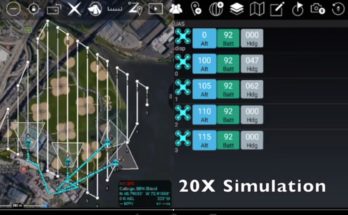From Defense Blog:
DARPA announced on 3 August that it Fast Lightweight Autonomy (FLA) program recently completed Phase 2 flight tests, demonstrating advanced algorithms designed to turn small air and ground systems into team members that could autonomously perform tasks dangerous for humans – such as pre-mission reconnaissance in a hostile urban setting or searching damaged structures for survivors following an earthquake.
Building on Phase 1 flight tests in 2017, researchers refined their software and adapted commercial sensors to achieve greater performance with smaller, lighter quadcopters. Conducted in a mock town at the Guardian Centers training facility in Perry, Georgia, aerial tests showed significant progress in urban outdoor as well as indoor autonomous flight scenarios, including:
- Flying at increased speeds between multi-story buildings and through tight alleyways while identifying objects of interest;
- Flying through a narrow window into a building and down a hallway searching rooms and creating a 3-D map of the interior; and
- Identifying and flying down a flight of stairs and exiting the building through an open doorway.
Begun in 2015, the FLA applied research program has focused on developing advanced autonomy algorithms—the smart software needed to yield high performance from a lightweight quadcopter weighing about five pounds with limited battery power and computer processing capability onboard. FLA’s algorithms have been demonstrated so far on air vehicles only, but they could be used on small, lightweight ground vehicles as well.
…
Additionally, the MIT/Draper team incorporated the ability to sync data collected by the air vehicle with a handheld app called the Android Tactical Assault Kit (ATAK), which is already deployed to military forces. Using an optional Wi-Fi link from the aircraft (that the human team member could turn on or off as desired), the air vehicle can send real-time imagery of objects of interest. During the flight tests, researchers successfully demonstrated autonomous identification of cars positioned in various locations around the mock town. With “exploration mode” mode on, the air vehicle identified the cars and provided their location with clickable high-resolution images in real-time via Wi-Fi, appearing as an overlay on the ATAK geospatial digital map on the handheld device.



